Green Crabs are common in shallow water of salt marshes, beaches and rocky coasts, or in vegetation. They can tolerate a wide range of salinities. They are voracious consumers of plants and animals, especially soft-shell clams, oysters, quahogs, and mussels. They uproot and destroy beds of Eelgrass – an important habitat-forming species for native fish, invertebrates, and waterfowl. Predation and habitat destruction by Green Crabs negatively impacts biodiversity, and harms local shellfish fisheries.
The European Green Crab is a shore crab with a carapace up to 10 cm wide (usually less than 8 cm) and varied in colour from mottled, green, red, yellow or brown. Adults have five obvious spines on either side of their eyes, and three bumps between their eyes. Their back legs are pointed, slightly flattened, and hairy.
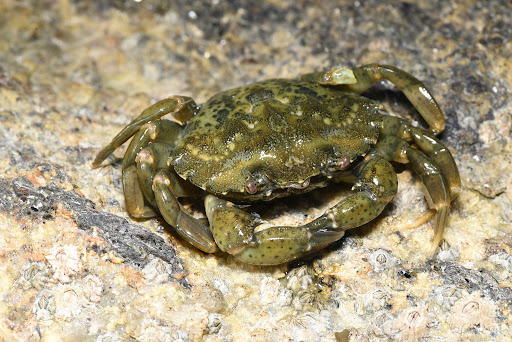
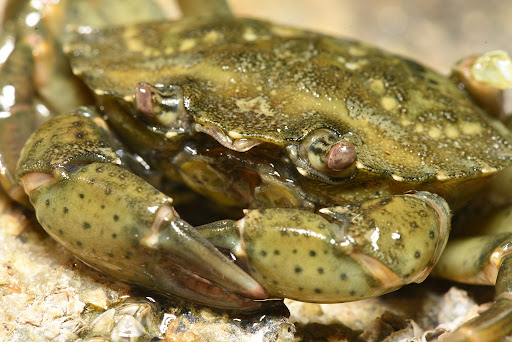
Asian Shore Crab
Hemigrapsus sanguineus
The Asian Shore Crab is a small, intertidal shore crab with a carapace up to 44 mm wide, spotted, reddish-brown, greenish, or dark purple.
They have three spines on either side of their shell and light and dark banding patterns on their legs. They live in low-energy, intertidal, boulder/cobble beaches and are generalist omnivores, known to eat mollusks, small crustaceans, polychaetes, and algae.
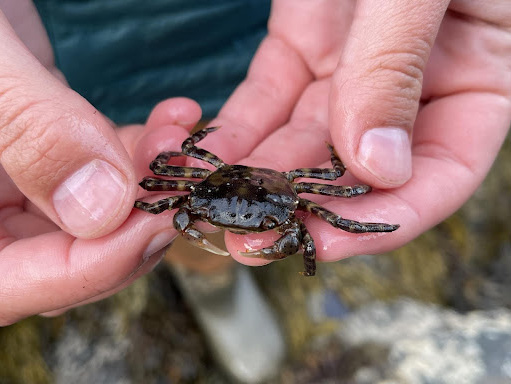
Five spines on either side of eyes; three bumps between eyes; back legs pointed; slightly flat and hairy.
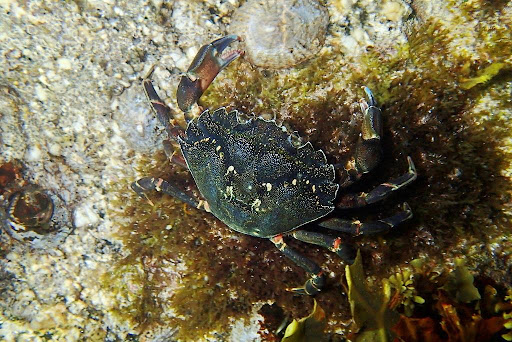
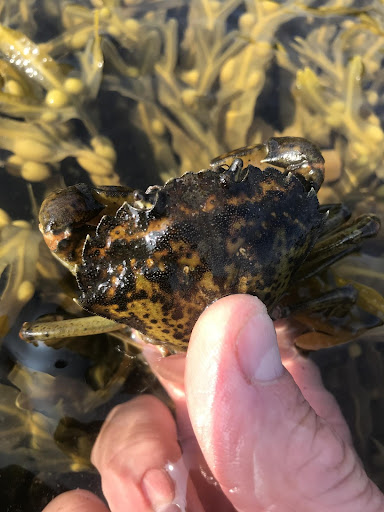
Green Crab is often referred to as the cockroach of the sea.
If boating or fishing in infested waters, keep your gear clean to avoid accidentally transporting crabs or crab larvae. Avoid transporting water or vegetation that may contain tiny crab larvae to prevent the accidental introduction into unaffected or less-affected areas. If invasive crabs are caught as bycatch, do not release them. If you spot this invasive species, report the location to iNaturalist, or directly to the NSISC.
Join our mailing list.